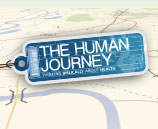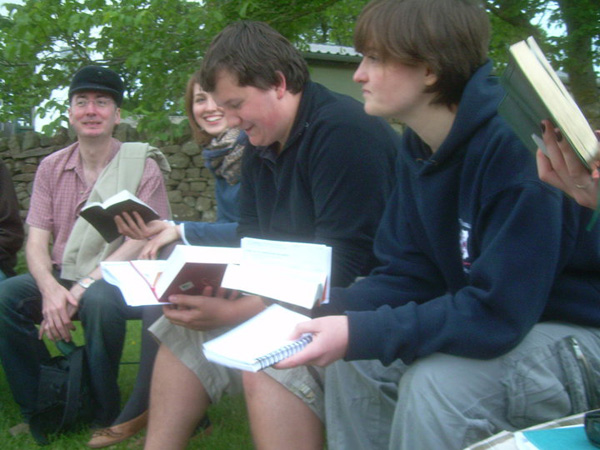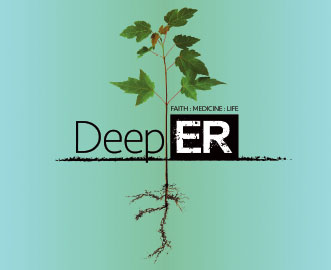New neonatal critical care guidelines
New guidelines regarding the provision of intensive care to premature babies born below 26 weeks' gestation, on the borderline of viability, were presented by the Nuffield Council on Bioethics (the Council). Their November 2006 report was titled Critical care decisions in fetal and neonatal medicine: ethical issues.
The Council recommends that no baby born before 22 weeks should be resuscitated, whereas intensive care should be provided for babies born at 25 weeks and above. Decisions between 22 and 25 weeks are to be made using a sliding scale that accounts for factors that change with increasing gestation time: survival rates are higher and chances of disability are lower. The best interests of the baby and the wishes of the parents are central to the decision making process.
The guidelines are deemed necessary because of inconsistencies in practice between the 250 neonatal units in the country. Some doctors hesitate to resuscitate at 24 weeks' gestation, while others will admit babies at 22 weeks to intensive care. The Council recognises that these variations can be due to differences in expertise and resources. The guidelines are relevant to the 1,400 of 4,000 babies born per year between 22 and 26 weeks who still show signs of life. Fertility treatment is a major cause of the increase in premature births.
Dr Tony Calland, chairman of the BMA medical ethics committee, is worried about these 'blanket rules'. He says that 'each case should be considered on its merits and its own context' and the BMA 'therefore cannot agree with stringent cut-off points for treatment'. Apart from the time limits, Dr Calland said the report mostly reflects 'existing best practice' and BMA advice on neonatology. (www.nuffieldbioethics.org 2006; 16 November, Press Association National Newswire 2006; 15 November)
Newborn euthanasia as a management option?
The Royal College of Obstetricians and Gynaecologists (RCOG) suggested euthanasia as a management option for severely sick or disabled neonates to prevent suffering. The RCOG made a submission of evidence to the Nuffield Council on Bioethics, prior to their November 2006 report on Critical care decisions in fetal and neonatal medicine: ethical issues, detailed in the previous story.
The RCOG said, 'if life-shortening and deliberate interventions to kill infants were available, they might have an impact on obstetric decision making, even preventing some late abortions, as some parents would be more confident about continuing a pregnancy and taking a risk on outcome.' They pointed out the inconsistency in the law: a woman can abort her 28 week old disabled fetus, but infanticide of a similarly disabled 24 week old neonate is illegal.
The Council did not intend to consider neonatal euthanasia originally. But responding to the RCOG in the report, the Council stated that it 'unreservedly rejects the active ending of neonatal life even when that life is “intolerable”.' Dr Peter Saunders, CMF general secretary, said that euthanasia was not the same as withholding or withdrawing treatment, which can be appropriate when 'that treatment's burden far outweighs any benefit it can bring'.
'It is not for medical professionals or indeed anyone else like families to determine whether someone else's quality of life will be good simply on the grounds of impairment or health condition,' said Simone Aspis of the UK Disabled People's Council. (www.nuffieldbioethics.org 2006; 16 November, www.guardian.co.uk 2006; 6 November, news.bbc.co.uk 2006; 12, 15 November)
Abortion time limit reduction rejected
A Ten Minute Rule Bill to reduce the abortion time limit from 24 to 21 weeks was rejected in October 2006 in the House of Commons, and with it a proposal for a ten-day 'cooling off' period for women to receive counselling between the request and the actual procedure. An argument for fetal sentience at 21 weeks was presented rather than the usual evidence of viability at 23 weeks. Late abortions are carried out by feticide - lethal injection into the fetus' heart before inducing labour.
Ms Chris McCafferty, Labour Member of Parliament (MP), arguing the counter case, said that the 'cynical, cruel and inhumane' bill encroached on women's reproductive rights. She argued that the 'cooling off' period would force women to travel abroad for abortions. Political parties do not have official policies on the issue, so individual MPs are given a free vote.
Josephine Quintavalle, of the pro-life campaign group Alive and Kicking, said that recent four dimensional ultrasound images help the public see the fetus as human. These scans allow people to see fetuses doing things such as sucking their thumbs in the womb.
186,400 abortions took place in England and Wales during 2005. Less than one percent take place after 21 weeks. 154 MPs were surveyed regarding the issue. In 2005, 63% supported lowering the limit compared to only 37% in 2004. (news.bbc.co.uk 2006; 31 October, The Economist 2006; 11 November)
Alleged infanticide for stem cells
Stem cells are harvested from aborted fetuses in Ukraine for international trade. The trade is being fuelled by unfounded treatment claims. Recent allegations have been made that even newborn babies are being killed to obtain stem cells. Video footage of autopsies showed dismembered bodies of neonates and fetuses missing organs such as the brain. A British forensic pathologist said these could be the result of harvesting stem cells from bone marrow as dismembering does not take place in a standard post mortem.
The footage was recorded by a campaigner in 2003 during the autopsies of 30 bodies exhumed from a cemetery used by one maternity hospital. It was given to the Council of Europe and the BBC. The BBC interviewed mothers in the city of Kharkiv who claimed that their babies had been snatched by maternity staff. The Council of Europe corroborated this claim and reported that hospital staff, who profit from the trafficking, are silent about the stolen infants.
The stem cells are being used for 'beauty treatments' that claim to rejuvenate facial skin. There is no international regulation so health tourists are travelling to places like Barbados, the Dominican Republic and Holland for treatment. These services are marketed mainly to wealthy British and American women.(news.bbc.co.uk 2006; 12 December, www.lifenews.com 2006; 8 August, 12 December)
Embryonic stem cells swing US voters
Embryonic stem cell research (ESCR) was hotly debated in the November 2006 US midterm elections for the House of Representatives and the Senate. It was significant in the shift in power from the Republican Party to the Democrats. The scope of ESCR allowed with federal funds will be widened, pledged Nancy Pelosi, Democratic representative and incoming Speaker of the House. The issue has led to an ongoing polarised debate between Christians and many scientists.
Missouri was a key battleground where an amendment to the state constitution, passed by a 51% majority, means that it is the only state apart from California in which ESCR is a constitutional right. As a result, future laws prohibiting ESCR in the state cannot be passed. Democrat Claire McCaskill was elected as Missouri's senator on the basis of her support for ESCR. Her campaign came to national attention due to support from Michael J Fox, of Back to the Future fame, who suffers from Parkinson's disease.
56% of America supports ESCR and 32% is against it, according to the August 2006 Pew Research Center poll. In July 2006, President Bush vetoed a bill in Congress to expand federal funding for the research. (news.bbc.co.uk 2006; 19 October, www.newscientist.com 2006; 9 November, www.reuters.com 2006; 13 November)
Contraception: the role of men
Men may be able to take more responsibility for contraception soon. A progesterone-testosterone based pill is undergoing final clinical trials. But three novel approaches do not rely on altering hormone levels.
Adjudin disrupts junctions between Sertoli cells that sperm development depends on. Its use is limited by toxicity to the body. But in trials on rats, scientists managed to target Sertoli cells specifically by attaching Adjudin to synthetic follicle stimulating hormone molecules. This resulted in a reversible infertile state that negated its extra-testicular effects. Normal sperm production took place once drug levels in the blood fell. The drug would be delivered from an implant as it is broken down by digestion. Human trials could take place within a few years.
Phenoxybenzamine had the side effect of preventing ejaculation when it was tested for treating hypertension. Thioridazine, for schizophrenia, has the same effect. Physiologists at King's College London discovered that the drugs relax the longitudinal muscles in the vas deferens, so sperm cannot be propelled during ejaculation. But side effects mean that the researchers are searching for other compounds that have the same action but are better tolerated. Experiments have only been carried out on vas deferens samples from vasectomies. After 17 years of research, animal testing may place soon.
Closer to the horizon is the Intra Vas Device (IVD) as an alternative to vasectomy. Miniature silicon plugs, inserted through small holes in the scrotum, block sperm transport. These have prevented conception in a pilot study of 30 men in America. The procedure has been successfully reversed in monkeys. The major concern is that of pressure building up behind the plug, which could damage glands in the testes. A variation is being tested in China, where a mesh-like plug stops enough sperm to prevent pregnancy but avoids pressure build-up.
Of 9,000 men surveyed in nine countries, 60% 'would like to relieve their partners of some of the burden of using contraception in their relationship or would like a reliable back-up to condoms'. (www.independent.co.uk 2006; 30 October, www.timesonline.co.uk 2006; 10 October, www.guardian.co.uk 2006; 28 November)
Eggs for sale?
In the UK, one in six couples find it difficult to conceive. With ovarian failure being one of the most common reasons for infertility, egg donation remains a popular treatment choice. However, payment for donation is illegal in the UK and egg donors are often difficult to find. Recent changes, that allow children born from donated eggs to discover their biological mother's identity at the age of 18, have meant that fewer women are volunteering to donate.
In America, the practice of offering financial incentives for donation remains a common practice and many organisations have seen an increase in donor enquiries from the UK. The director of one of the largest private egg donation companies, eggdonor.com comments, 'We've seen more and more applicants from the UK…[who] want to be compensated, which is fair.'
However, many question the practice of selling eggs to infertile couples. As yet, the long-term effects of donating eggs remain unknown. Furthermore, many are uncomfortable with the idea of selling eggs, believing that donors should have more altruistic motives.
Whilst the practice of payment for eggs remains illegal in the UK, it is worth an estimated $4.5 bn in America. With some suggesting that expenses should be paid for donors, perhaps it is only time before paying for eggs becomes legalised.
(www.independent.co.uk 2006; 5 November, news.bbc.co.uk 2006; 30 October)
Analogies between reading medical and religious texts
In both religion and science, world views affect the interpretation of evidence. It is important for this to be taken into account when considering treatments, argued Matthew Links, director of the University of New South Wales Clinical School Cancer Care Centre in Australia, in the British Medical Journal. He sees fundamentalist, conservative and liberal approaches to interpreting evidence in both. He considers medicine, like religion, to be a system of beliefs based upon the interpretation of literature.
In his opinion, religious fundamentalism may be associated with the literal reading of sacred texts. Similarly, in science, fundamentalism 'sees the literature as law', disregarding acknowledgement of limitations and seeing deviation from evidence as heresy. By contrast, a liberal approach in science, in a similar manner to in religion, sees literature as merely a guide, providing principles to be applied to specific situations.
Links argues that interpretation of evidence greatly affects the management offered to patients, and that deviation from the evidence may result in poor treatment outcomes. Using oncology, he illustrates this point, looking at various controversies from fundamentalist, conservative and liberal viewpoints:
In chemotherapy, results from individual drug trials have been applied to whole groups of drugs. He asks whether such a liberal application leads to an improvement in care, or if it is a dangerous deviation from the evidence. Chemotherapy drugs are often administered in doses different to trial doses. Would a more conservative view render better results? Or should more evidence be sought? Furthermore, can evidence from clinical trials really be applied accurately to clinical samples? (www.bmj.com 2006; 18 November)
Liver cells grown from umbilical cord stem cells
Scientists from Newcastle University have grown tiny sections of human liver using stem cells from umbilical cords. It is believed that the laboratory-grown miniature livers, the size of a penny, could be used to test drugs, reducing the need to test on animals and human beings.
Researchers used a microgravity bioreactor, developed by NASA technology, to mimic the effect of weightlessness to grow liver tissue. They hope this will be the first step towards creating fully grown livers that can be used for human transplant. However, they said that this is ten years down the line. Meanwhile, they have started a company called ConoStem in an effort to market their stem cell work.
The news of the Newcastle based team was welcomed by the British Union for the Abolition of Vivisection, which urged the government to invest money into the creation of 'ethically-sourced human tissue'.
Other experts such as Dr Stephen Minger, director of the Stem Cell Biology Laboratory at Kings College London, warned that because the work is unpublished it is not possible to assess its worth. In response, Dr Mike Nicholds, acting chief executive of ConoStem, said peer reviewed papers are in the pipeline, and it is hoped that the first liver cells will be used in a drug test within twelve months. (news.bbc.co.uk 2006; 31 October, timesonline.co.uk 2006; 31 October)































